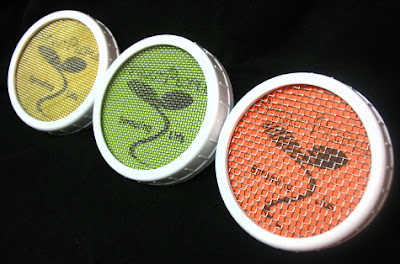There are two things I highly recommend, green smoothies and sprouts. Including highly nutritious food in your diet shouldn't break the bank. As I mentioned before, superfoods from all different parts of the world are fantastic, but greens and sprouts are a very inexpensive way to drastically increase your nutritional intake.
Why sprout?
Sprouts are an incredible act of nature. I marvel at the unbelievable transformation that occurs when a seed, legume or grain meets the right conditions. Grains, legumes and seeds are basically dormant packages that are acidic in pH and have there own inherent nutritive value. When a seed or grain sprouts, it is putting forth an incredible effort to become a viable plant, to become rooted and eventually to bear fruit. To say that soaking seeds and grains increases the nutritional value exponentially is an understatement. It is an outright explosion of nutrition! Live enzymes begin to die in produce as soon as they are picked. Sprouts, on the other hand, are teeming with live enzymes and they increase in enzymes and nutritive value as they grow into sprouts or micro greens. They also change from acidic to alkaline. Sprouts are biogenic, meaning that they are able to transfer their life force to the human body when consumed. In other words, high octane nutrition from these little powerhouses translates into high energy output from the human body.
To give you an idea of the increase, here are a few examples. When wheat is sprouted, vitamin B12 quadruples. B vitamins increase between 3 and 12 times. Vitamin E triples and fiber content increases 3 to 4 times. When mung beans sprout, Vitamin A increases two and a half times. Some nutritients in certain grains, seeds or legumes increase up to 500% more than before sprouting. Read the section titled "The marvel of sprouts" under the section "Eat more sprouts" here at sproutpeople.com
It wasn't until I added sprouts to my diet that I noticed the skin around my eyes plump up with collagen, making my crow's feet wrinkles disappear. I also find that I haven't gotten sick in a very long time. Be sure to make your own sprouts. There's no telling how long store bought sprouts have been sitting around and what kind of spraying they undergo to remain "fresh." Sprouting at home is incredibly cheap and yields the best quantity and quality of nutrition for pennies on the dollar!
How to sprout:
One thing I love about sprouting is how amazingly simple it is. This is a basic method for sprouting. Using purified water, soak seeds, grains or legumes overnight and drain all water out in the morning. Rinse twice a day making sure to drain water out completely. Be sure you have grains, seeds and legumes that are alive and not dead from years of storage. Raw nuts will not sprout but will become alkaline after soaking. There is only one grain that goes bad quickly- quinoa. Soak this grain for two hours and use it soon after. Forget storing it for more than 24 hours; it will go bad. Here is a sprouting chart to know how long it takes to sprout certain seeds, grains or legumes.
Tools of the trade:
These are some items used to sprout. A simple bowl will work for the job. Canning jars may also be used with lids like these from sproutpeople.com

Sprouting trays are touted as best because of the air circulation that they afford the sprouts. More air and better drainage prevents mold from growing. You can either make your own if you are so inclined or buy one from Amazon like these. You can also use sprouting bags such as the one below from sproutman.com.
Try to add about 1 cup of sprouts to your diet per day. Don't stop there, increase this by as much as you would like. Here are some more popular seeds, grains and legumes to sprout:
alfalfa, almonds, lentils, mung beans, sesame, sunflower, and wheat. In the next post I will share some simple recipes and ideas to add sprouts to your diet.
Resources:
You can find seeds, grains and legumes at sproutpeople.com, sproutman.com or Amazon. I sprout lentils that I pick up at my local grocery store. I also find sproutable grains and seeds at Roots. If you would like to read more about sprouting, I recommend The Sprouting Book by Ann Wigmore.
The sad news about agave nectar:
On another note. Did you see Kimberly Snyder's post on foods you should never eat? Agave nectar is one of them. This makes me so sad, I love agave. I'm not a fan of stevia. Raw honey is very good for you but it is higher on the glycemic index. I have been able to wean myself off sweeteners. Sunday through Friday I never use them. But I have used agave when I cook for my family. Back to the drawing board!
Enjoy the journey!



